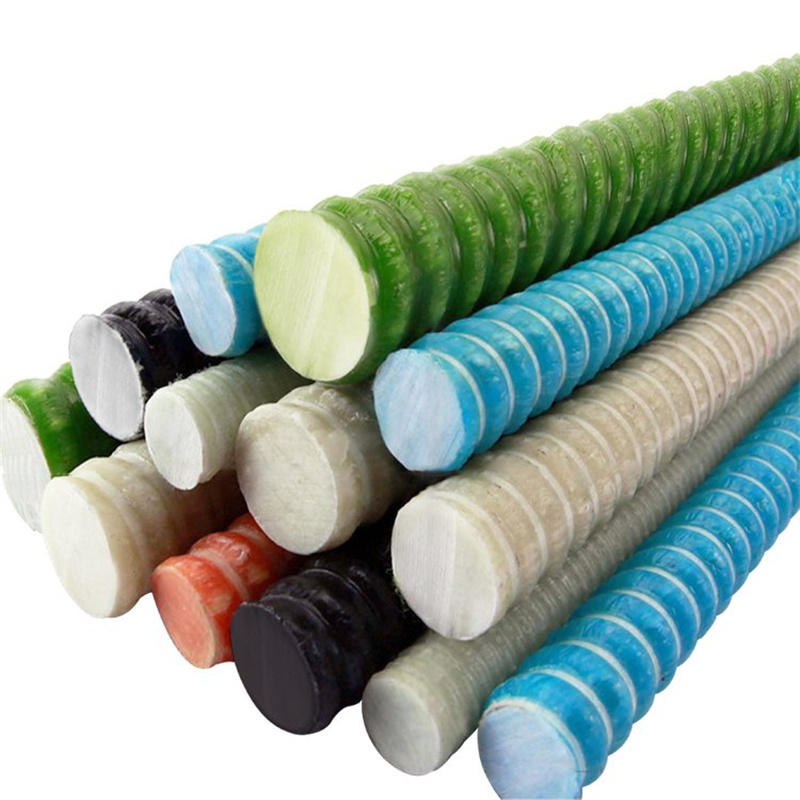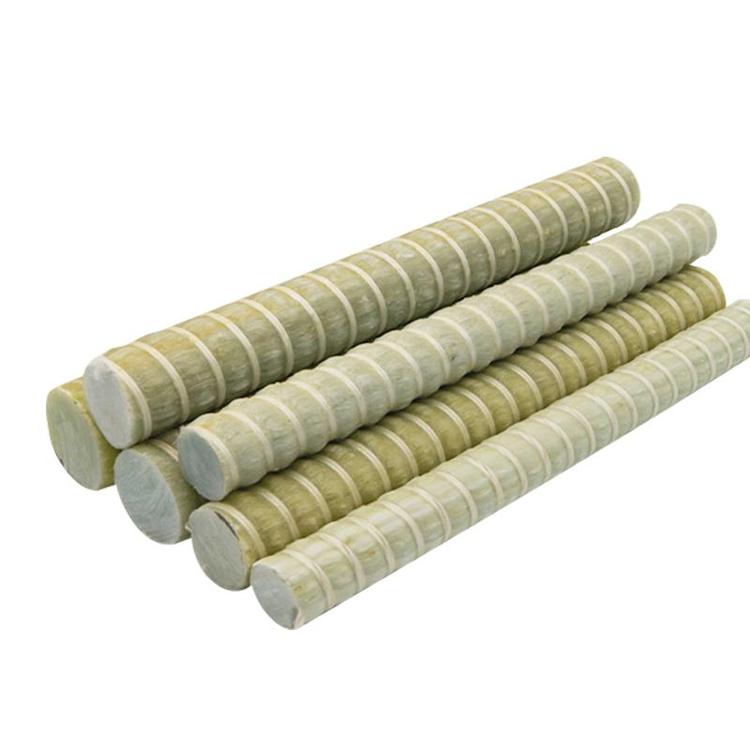Introduction
Glass Fiber Reinforced Polymer (GFRP Bolt) has revolutionized the construction and mining industries with its unique combination of strength, durability, and corrosion resistance. Unlike traditional steel bolts, GFRP bolts offer a non-corrosive alternative that is ideal for harsh environments. This article explores the advantages and limitations of GFRP bolts, shedding light on their applications, performance characteristics, and the technological advancements that have made them a viable option for modern engineering projects.
Mechanical Properties of GFRP Bolts
GFRP bolts are known for their high tensile strength and excellent fatigue resistance. Composed of high-strength glass fibers embedded in a polymeric resin matrix, these bolts offer mechanical properties that are comparable to steel while being significantly lighter. The tensile strength of GFRP bolts can reach up to 1,000 MPa, making them suitable for applications requiring high load-bearing capacity. Additionally, the low weight of GFRP bolts reduces the overall structural load, which can be particularly beneficial in large-scale construction projects.
Strength-to-Weight Ratio
One of the most significant advantages of GFRP bolts is their superior strength-to-weight ratio. This property not only simplifies transportation and installation but also contributes to the overall efficiency of a project. For instance, in mining operations, the use of lighter bolts can improve safety by reducing the risk of accidents during installation.
Corrosion Resistance
Corrosion is a major concern in environments exposed to moisture, chemicals, or saltwater. Traditional steel bolts are susceptible to rust, which can compromise structural integrity over time. GFRP bolts, on the other hand, exhibit excellent corrosion resistance due to their non-metallic nature. This makes them ideal for use in marine environments, chemical plants, and infrastructure exposed to de-icing salts.
Longevity and Maintenance
The longevity of GFRP bolts reduces the need for frequent maintenance and replacements. Structures utilizing GFRP bolts can have extended service lives, leading to cost savings in the long term. Studies have shown that GFRP bolts can maintain their mechanical properties for over 50 years, even in aggressive environments.
Electrical and Thermal Insulation
Another advantage of GFRP bolts is their inherent electrical and thermal insulation properties. This characteristic is particularly beneficial in applications where electrical conductivity is a concern, such as in power plants or electronic equipment installations. Moreover, the low thermal conductivity of GFRP bolts prevents the formation of thermal bridges, enhancing energy efficiency in building constructions.
Limitations of GFRP Bolts
Despite their advantages, GFRP bolts also have limitations that need to be considered. One of the primary concerns is their relatively low modulus of elasticity compared to steel. This means that GFRP bolts exhibit greater deformation under load, which can be a critical factor in some structural applications.
Creep and Stress Relaxation
GFRP bolts are prone to creep and stress relaxation over time, especially under sustained loads and elevated temperatures. Engineers must account for these factors during the design phase to ensure structural integrity throughout the service life of the bolt. Material selection and proper engineering design can mitigate these effects, but they remain a limitation compared to steel bolts.
Sensitivity to UV Radiation
Exposure to ultraviolet (UV) radiation can degrade the polymer matrix of GFRP bolts over time. This degradation can lead to reduced mechanical properties and compromised performance. Protective coatings or additives can be used to enhance UV resistance, but these measures add to the overall cost and complexity of using GFRP bolts in outdoor applications.
Cost Considerations
Initial cost is often a factor when choosing between GFRP and traditional steel bolts. GFRP bolts are typically more expensive upfront due to the cost of raw materials and manufacturing processes. However, when life-cycle costs are considered—including maintenance, replacements, and potential downtime—the long-term savings offered by GFRP bolts can offset the initial investment.
Economic Analysis
An economic analysis should be conducted to compare the total costs of using GFRP bolts versus steel bolts over the lifespan of a project. Factors such as installation labor, maintenance frequency, and potential failure costs should be included. In many cases, the durability and low maintenance requirements of GFRP bolts make them a cost-effective option in the long run.
Environmental Impact
Environmental considerations are increasingly important in construction and engineering projects. GFRP bolts have a lower environmental impact during their lifecycle compared to steel bolts. The production of GFRP generates fewer greenhouse gas emissions, and their corrosion resistance reduces environmental contamination from rust and metal leaching.
Sustainability Initiatives
Using GFRP bolts aligns with sustainability initiatives aimed at reducing carbon footprints and promoting eco-friendly materials. Projects that prioritize sustainability may benefit from the use of GFRP bolts, potentially qualifying for green building certifications and incentives.
Application Areas
GFRP bolts are utilized in a variety of sectors, including civil engineering, mining, marine construction, and infrastructure projects. Their unique properties make them suitable for specific applications where traditional materials may fail or require excessive maintenance.
Mining and Tunneling
In mining and tunneling, GFRP bolts are used for ground support and reinforcement. Their non-conductive nature eliminates the risk of sparking, which is crucial in volatile environments like coal mines. Additionally, their corrosion resistance ensures long-term stability in moist and chemically aggressive underground conditions.
Marine and Coastal Structures
Marine environments are highly corrosive due to saltwater exposure. GFRP bolts are ideal for docks, piers, and offshore platforms where corrosion resistance is paramount. Their use reduces maintenance costs and extends the service life of marine structures.
Design and Installation Considerations
Designing structures with GFRP bolts requires an understanding of their material properties. Engineers must account for factors such as lower modulus of elasticity and potential creep. Installation procedures may also differ from those of steel bolts, necessitating specialized equipment or training.
Compatibility with Other Materials
GFRP bolts can be used alongside traditional materials, but compatibility should be assessed. For example, the coefficient of thermal expansion for GFRP differs from that of steel or concrete, which could lead to stress concentrations under temperature fluctuations.
Technological Advancements
Recent advancements in composite materials have improved the performance and reliability of GFRP bolts. Innovations in resin formulations and fiber technology have enhanced their mechanical properties and resistance to environmental degradation.
Nanotechnology in GFRP
The incorporation of nanomaterials into the polymer matrix has shown promise in increasing the strength and durability of GFRP bolts. Nanoparticles can improve load transfer between fibers and the matrix, leading to enhanced mechanical performance.
Case Studies
Several projects worldwide have successfully implemented GFRP bolts, demonstrating their practicality and benefits. These case studies provide valuable insights into the real-world performance of GFRP bolts in various applications.
Tunnel Reinforcement in Europe
In a European tunneling project, GFRP bolts were used to reinforce the tunnel lining. The non-corrosive nature of GFRP bolts was critical due to the high moisture content and chemical aggressiveness of the soil. The project reported reduced maintenance costs and improved safety.
Regulatory Standards
As the use of GFRP bolts becomes more widespread, international standards and guidelines have been developed to ensure quality and performance. Compliance with these standards is essential for the safe and effective application of GFRP bolts.
ISO and ASTM Standards
The International Standards Organization (ISO) and ASTM International have published standards outlining test methods, material specifications, and design guidelines for GFRP bolts. Adhering to these standards ensures that the bolts meet the necessary performance criteria for their intended applications.
Future Prospects
The future of GFRP bolts looks promising, with ongoing research focused on overcoming current limitations and expanding their applicability. As material science advances, we can expect to see improved properties and new formulations that address existing challenges.
Innovations in Resin Technology
Developments in resin technology aim to enhance the thermal stability and UV resistance of GFRP bolts. High-performance resins can improve mechanical properties and extend service life, making GFRP bolts more competitive with traditional materials.
Conclusion
GFRP bolts offer a range of advantages, including high strength-to-weight ratio, corrosion resistance, and electrical insulation. These properties make them suitable for specialized applications where traditional steel bolts may not perform adequately. However, limitations such as susceptibility to UV degradation and lower modulus of elasticity must be carefully considered. With advancements in material technology and increasing awareness of environmental sustainability, the use of GFRP bolts is expected to grow. Engineers and project managers should weigh the advantages and limitations to determine if GFRP bolts are the appropriate choice for their specific applications.
For more detailed information on the applications and specifications of GFRP Bolt, industry professionals are encouraged to consult the latest research and manufacturer guidelines. By staying informed about technological advancements and best practices, stakeholders can make decisions that enhance the safety, efficiency, and sustainability of their projects.



























